
Are you 🫵 looking for a Web3 job but don’t have a way to certify your knowledge or prove your experience? Do you 🫵 want to bolster your existing Web3 identity? Want to find out how Web3 credentials can beat the black market?
Here’s how to level-up your Web3 hustle and build your on-chain (and off-chain!) resumé with Web3 credentials. 👇
In this article, we will explore:
-
What Web3 Credentials Are
-
Problems of Web2 Credential Issuance
-
The Importance of Web3 Credentials
-
The Current Web3 Credential Landscape
-
How to Level-Up Your Web3 Hustle With Web3 Credentials
-
Issues With the Current Web3 Credential Landscape
(Go to Section 4 if you want to skip to the juicy stuff 👀).
1. What Are Web3 Credentials?
Traditional Credentials
First, let’s define what traditional credentials are. A credential is defined as a verification that a person has a specific attribute, qualification, or claim. This claim is made by an issuer, which could be a group, person, or entity. Traditional credentials can describe qualitative or quantitative traits, are typically issued via a physical medium, such as through paper, cards, badges, or plaques, and are stored digitally without the use of any cryptographic methods.
Some examples of traditional credentials include academic accolades, certifications, identification documents, government documents, and passwords.
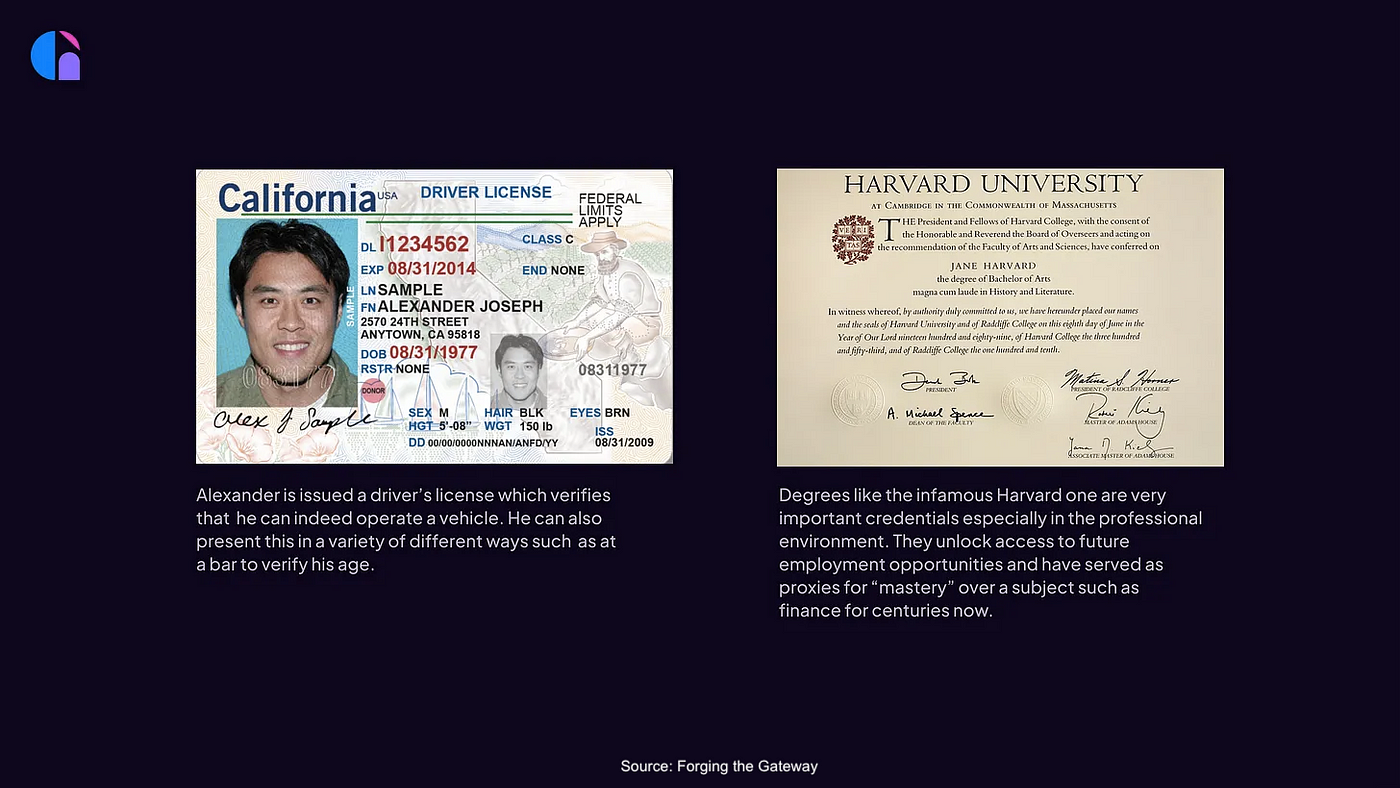
Traditional credentials can also be collectively used to give out other credentials. For instance, a person’s Social Security Number, birth certificate, passed driver’s test, and picture are needed to issue a driver’s license to said person.
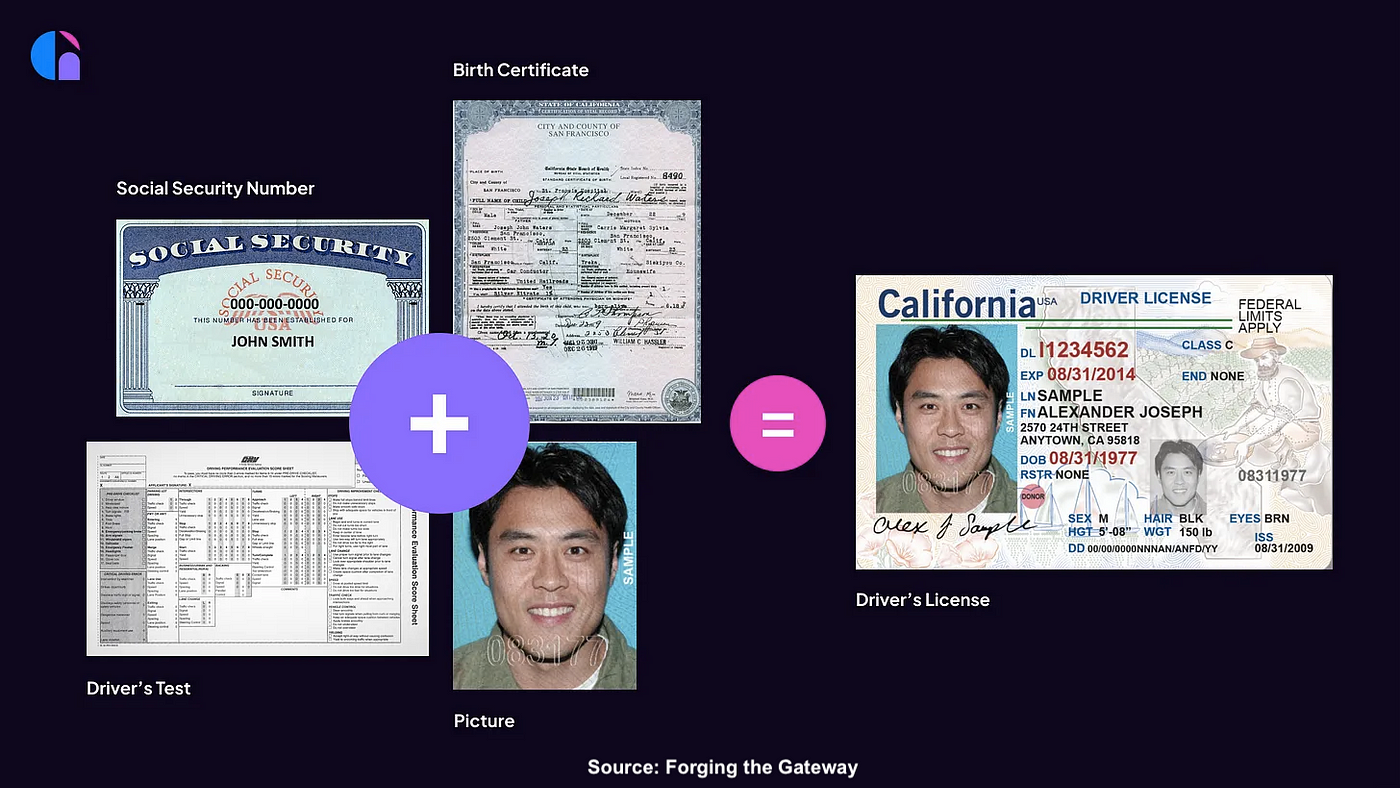
Additionally, all credentials must be verified claims, meaning that claims have to be traced back to the issuer with absolute certainty for the aforementioned claim to be considered an official credential. There would be no assurance that the credential is authentic if they cannot be verified. It is for that reason that centralized authorities, like corporations and government agencies, currently control the distribution of credentials and store them in their various databases. As Gateway’s Sanket Jain points out, “Storing the data in their respective database allows them to confirm that you indeed are the person who this claim is about.”
We are issued credentials from the moment we are born in the form of birth certificates. Whether noticed or not, credentials are ubiquitous and help comprise a portion of the social fabric that we interact with on a daily basis, including our digital identities.
Credentials allow us access to certain privileges we otherwise couldn’t have access to, such as operating heavy motor vehicles or landing prestigious job openings. Credentials also send social signals that we have mastery at a particular skill. Sanket Jain puts it best, “These powerful attestations function as building blocks of your professional and personal identity. These building blocks provide context on you as a person, and your competencies, serving as important proxies for your reputation.”
Web3 Credentials
Web3 credentials are the next iteration of traditional credentials, and differ from traditional credentials in that they are not controlled by centralized authorities and are issued through a different medium, a Web3 medium, in the form of tokens. There are three mediums by which Web3 credentials are issued: Non-Fungible Tokens (NFTs), SoulBound Tokens (SBTs), and Verifiable Credentials (VCs). Each have their own advantages and disadvantages. The following is the definition of each.
NFTs: A unique digital identifier that cannot be copied, substituted, or subdivided, that is recorded in a blockchain, and that is used to certify authenticity and ownership (as of a specific digital asset and specific rights relating to it).
SBTs: A category of NFT that is non-transferrable, non-sellable, and non-destroyable. They represent credentials and affiliations within Decentralized Society (DeSoc) that are linked to Souls, a type of wallet address that establishes provenance.
VCs: Tamper-proof W3C credentials in the form of JSON (Java Script Object Notation) files with semantic meaning and structured schema that can be verified cryptographically to implement self sovereign identity and to protect your data. They can represent information found in physical credentials, such as a passport or license, as well as things that have no physical equivalent, like ownership of a bank account.
Please refer to and click to enlarge the Venn Diagram below to ascertain the differences and similarities between these three vehicles of Web3 credentials — they are crucial to acknowledge!
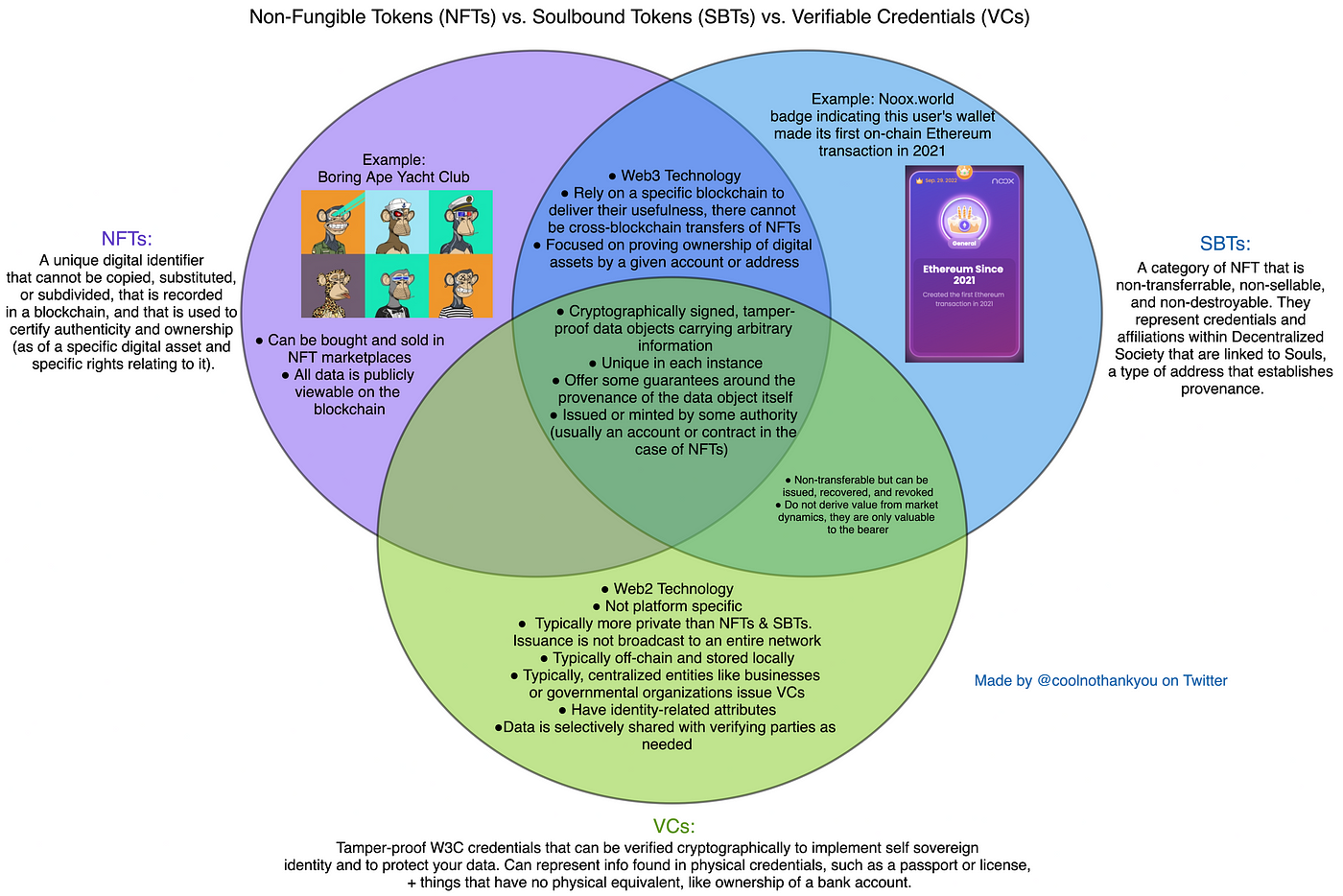
It should be noted that because soulbound tokens are a relatively new concept introduced in May of 2022, similar terms by the names of Non-Transferable Tokens (NTTs) and Account-Bound Tokens (ABTs) exist that reference many of the core definitions inherent of soulbound tokens. The term “NTT” has been used since at least July of 2020, whereas ABTs were first introduced in EIP-4973 in April of 2022.
For the simplicity of this article, we will group NTTs and ABTs under the soulbound token category, as soulbound tokens encompass the traits found in NTTs and ABTs.
Web3 Credential Use Cases
Web3 Credentials can be used in a variety of ways, such as:
-
Certifications
-
Digital Resumé
-
House-Renting History
-
Medical Record Management
-
DAO Sybil Attack Prevention
-
Mortgages
-
Legal Documents
-
Legacy Documents; these are legal documents that define who you are, such as birth and marriage certificates.
-
Proofs; these are proof that you have done something or have something in your possession. Some examples include proof-of-vaccination, proof-of-education, proof-of-residence, proof-of-income, proof-of license, proof-of-insurance, proof-of-contribution, proof-of-engagement, and proof-of-completion.
This isn’t meant to be an exhaustive list; the use cases of Web3 credentials alone could be its own article. If you would like to explore more use cases, please check out this article by Affinidi Pte. Ltd.
On-Chain vs. Off-Chain Issuance
VCs differ greatly from NFTs and SBTs due to the fact that they are stored off-chain.
Before continuing, it is important to discuss and keep in mind the significance of permanently putting information on-chain versus withholding it off-chain.
Because VCs are off-chain, they allow a user to selectively share credential data only with relevant parties across the Internet as needed. You can also have a VC issued to your wallet without that issuance being broadcast to the entire Internet. Why is this important?
“…almost any technology with such transformative potential will have a similar potential for destructive transformation…” — Decentralized Society, Finding Web3’s Soul
As we know, all data in the blockchain is publicly viewable by anyone in the world, meaning any sensitive information stored on the blockchain will be accessible to everyone, regardless of their intentions. Remember, people’s intentions could be malicious!
“The consequences of this lack of privacy are serious. Indeed, without explicit measures taken to protect privacy, the “naive” vision of simply putting all SBTs on-chain may well make too much information public for many applications.”— Decentralized Society, Finding Web3’s Soul
For instance, as Evin McMullen explains in “Soulbound: On or off Chain | Vitalik Buterin and Evin McMullen,” “Let’s say… I get a token from SheFi…so then everyone knows that I likely identify as a woman. The assurance would increase significantly if I received a diploma soulbound token from Smith or Wellesley College, a membership token from Boys Club, SHE256, Metagama Delta… However, when we talk about loans, women are less likely to be approved for loans, and when they are, they are more likely to be offered costly rates. Only 2.8% of VC funding goes to female entrepreneurs, so my chances of getting investment might take a hit based on revealing this facet of my identity depending upon the context… You can imagine that even receiving a minimal token from a certain address can leak some information that unintentionally affects your experiences immediately… The permanence of our public chains can unintentionally diminish freedom for disenfranchised communities by publicizing the very traits used to discriminate against them.”
To recap, NFTs and SBTs allow for potential honeypots of personal information to be visible on-chain and read anonymously, by anyone, regardless of their intentions.
Adding Zero-Knowledge proofs to NFTs and SBTs could potentially allow for more sensitive information, like birthdates or addresses, for instance, to be put on-chain without necessarily revealing that information. A person could check if an individual would reside in a certain region or be above or below a certain height, but the specific identifying information of a person wouldn’t be compromised in any way. Exploration of more potential privacy preserving solutions of SBTs, and by extension, NFTs, have already begun in pages 20–23 of Decentralized Society: Finding Web3’s Soul.
However, we must acknowledge that while VCs have been under public development since 2017, NFTs and especially SBTs by comparison are relatively new technologies that gained popularity in 2017 and 2022 respectively. Therefore, more technological NFT and SBT innovation is expected.
Moral of the story, be very cautious of the information you decide to put on-chain!
2. Problems of Web2 Credential Issuance
Historically, credentials have been controlled by large centralized authorities, like governments and universities, resulting in fractured reputation with no interoperability between the real and digital worlds in which we live.
The main dilemmas of Web2, or traditional, credential issuance are privacy infringement, data security issues, inefficiency, lack of portability, and loss.
Privacy Infringement: Credential data can be accessed and used without your consent, becoming corporate leverage in the process. Many centralized authorities sell your data off to whoever pays money for them, leaving your data compromised.
“Proprietary data also creates entrenched winners who are able to achieve scale because they know more about you and your preferences than the rest of their competitors.” — Sanket Jain, Forging the Gateway
Data Security Issues: As credential data is far more abundant than the number of centralized authorities issuing those credentials, few large entities can afford to maintain security for such a massive amount of data.
Inefficiency: The same validation processes have to be repeated at multiple centralized entities. For instance, the Know Your Customer (KYC) process is the same at many banks, yet we are required to undergo this identical process if we wish to do business at two or more banks.
“Users need multiple apps to request and receive the same certificates, and are unable to use their preferred existing apps to manage an increasing amount of digital credentials in their possession.” — Identity Woman in Business, Where the W3C Verifiable Credentials meets the ISO 18013–5 Mobile Driving License
Loss: Loss can be thought of in two ways when referencing traditional credentials.
-
Physical versions of Web2 credentials can get lost easily, and they are costly and time consuming to replace.
-
Credentials are digitally “lost” because they are unable to be utilized between digital, centralized platforms, therefore becoming trapped in application siloes. For example, the reputation and following a person builds on Twitter does not transfer over to that person’s YouTube account.
Lack of Portability: Web2 credentials are not securely portable across our increasingly digitized world. Credentials that are stored digitally are often not easily accessible to their owners, practically rendering them useless in a digital landscape such as the metaverse.
3. The Importance of Web3 Credentials
Web3 credentials are status symbols of our blockchain expertise and show how competent we are when interacting with the Web3 world. Our on and off-chain merits are also packaged and composed in a succinct, easily consumable, human-readable format for the average user to understand.
Not only that, but protocols and individuals can function based on trust because Web3 credentials’ attributes enables them to serve as a means of building digital social identities. As such, Web3 credentials establish trust and verify our digital social identities based on contextual information.
Web3 Credentials > Traditional Credentials
Web3 credentials are much more powerful and expansive than traditional credentials and improve upon a number of the pain-points to be had with traditional credential issuance.
Privacy Infringement → Full Data Control & Ownership: All Web3 credentials are wholly owned by you and controlled by your wallet and private keys. You have control over who uses your data; if organizations want access to your data, they’ll have to be much more transparent in what data they want and what they’ll do with that data. Therefore, having mutual, trustworthy relationships with organizations will be key. This is especially important now, as the remote workforce has grown with the result of the COVID-19 pandemic and has heightened concerns regarding personal data access from centralized organizations.
Data Security Issues → Decentralization: The decentralized nature of blockchains and VCs ensure that your data isn’t being stored in centralized locations primed for hacking. All of your data is cryptographically secured and tamper-proof.
Loss → Composability: Physical loss is automatically fixed as all Web3 credentials are digitally issued. Most importantly, digital “loss” is fixed since Web3 credentials are composable, an important trait that allows for components of a system to be utilized in various combinations to satisfy specific user requirements. Being composable allows for Web3 credentials to be seen and used by different communities and protocols to issue new credentials based on previous inputs, A.K.A. credentials previously issued by others.
“A single wallet interacts with various dApps, games, and protocols, and its assets accumulate in one place rather than being scattered across multiple accounts. Web3 allows everyone to recognize what you own and do across the entire ecosystem. Your wallet and its possessions have the potential to be a digital embodiment of your habits, interests, accomplishments, and values.” — Leo Jacoby, ERC-721 or 1155 for Web3 Achievements?
Inefficiency & Lack of Portability → Efficiency & Portability: Because your private keys control access to your earned credentials, your credentials won’t be limited to being held on one platform; they’ll follow you to every community you decide to join. This also means that the same verification processes, like KYC , for instance, won’t have to be repeated for each DApp or Web3 site you visit.
Verifiability: No organization can alter, delete, or suspend your credentials after issuance. All on-chain credentials are instantly verifiable because of the public and open nature of the blockchains they exist on. All off-chain credentials become verifiable when an attestation is signed by a public key.
The Hyper-Financialization Fix
“Web3 aspires to transform societies broadly, rather than merely financial systems…To skirt hyper-financialization…we propose…empowering souls and communities to encode rich social and economic relationships.” — Decentralized Society, Finding Web3’s Soul
“A common criticism of the “web3” space as it exists today is how money-oriented everything is. People celebrate the ownership, and outright waste, of large amounts of wealth, and this limits the appeal and the long-term sustainability of the culture that emerges around these items…Making more items in the crypto space “soulbound” can be one path toward an alternative, where NFTs can represent much more of who you are and not just what you can afford.” — Vitalik Buterin, Soulbound
As Vitalik Buterin alludes, Web3 credentials have the power to transform the Web3 space by creating a realm away from the hyper-financialization we have in the space today. Because blockchain technology is inherently financial in nature, we are limited in today’s Web3 world with how we can express ourselves. Web3 credentials allow us to add our non-financial traits to our Web3 identity, making our Web3 identities closer to an accurate representation of our real-life selves.
Nixing the Credential Black Market
Credentials are hard to get, sometimes costing a quarter of a million dollars in total in the case of university degrees, with that number only expected to rise. As a result, an illicit market rife with fake credentials flourishes. Globally, fake vaccine certification and academic degree markets have risen, with fake COVID-19 vaccination certificates being sold for as little as £25 (approximately $29 at the time this article was written).
Web3 fixes these black market woes; falsifying claims is nearly impossible to do with blockchain technology because of its public availability ad immutability.
A Possible Solution to the Identity Theft Crisis
Over 15 million Americans get their credentials compromised and become victims of identity theft every year, costing over $56 billion in losses in 2020 alone.
Say a person’s Social Security Number were a VC, and that person’s SSN was needed to sign up for a stock trading account. Following today’s user-flow, that person would have to sign a transaction in their wallet in order to allow the stock trading application access to the information inside their SSN VC, a process which is much more secure than today’s Two-Factor Authentication methods.
If a hacker wanted access to that SSN in order to set up a credit card, the actual owner of that SSN would have to sign a secure transaction in the wallet holding that SSN VC, requiring the hacker to use more savvy tricks to get a transaction from a specific wallet signed.
Giving Less Educated and Remote Workers A Chance
Despite students investing several years and thousands of dollars in their education, these days more employers are dismissing academic credentials in job applications. Explicit accomplishments and skills must be vetted, and hiring and sourcing talent is contingent upon that. College degrees might not cut it anymore for signaling competency for a specific role.
Web3 credentials can be instantly and objectively substantiated, with the bonus that an employer can see what material was learned if that information was linked to the credential. This allows for skills to be displayed in a trustless and bias-free way.
Because of this, the playing field is evened for individuals who are in the job market but might not have the finances to pay for a college education. In the future, it might not be important if a person has a computer science degree, for instance, or if they are self taught; their Web3 credentials would speak for themselves. People from unorthodox educational paths would be just as likely to get hired as people from traditional educational paths.
Additionally, as fully remote work becomes more and more popular, it can be harder to build a name for yourself when operating in a purely digital environment. Web3 credentials are an easy way to keep track of all of your digital milestones, whether big or small.
4. The Current Web3 Credential Landscape
Presently, a plethora of Web3 credentials exist for you to claim. As with traditional credentials, a number of requirements, like following a project on Twitter or completing an on-chain transaction, must be satisfied before these Web3 credentials can be issued and claimed. The number of requirements differs on a case-by-case basis for a particular credential.
Web3 credentials can currently be sorted into several prominent categories. Below, you will find a curated platform, protocol, and product list of such categories with emoji symbols denoting a different meaning for each project.
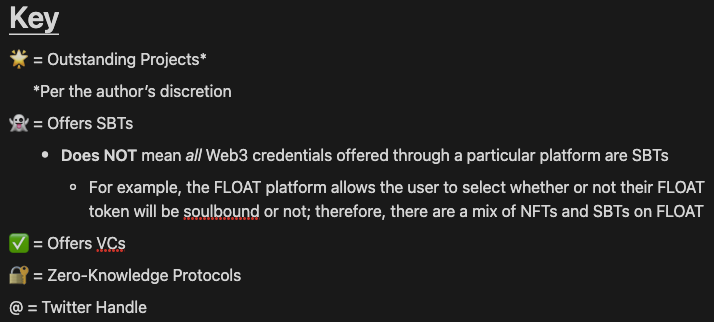
Please refer to the key above when determining the meaning of each emoji.
Click on a project’s name or on its Twitter handle below to learn more about it!
I want to upskill you with the latest and greatest resources to contexualize your on-chain activity while leveling up your Web3 hustle. Here are some of the most popular, and lesser known, resources to get you started:
Note: Only platforms, products, and protocols that issue credentials in some form are listed below; that is, other platforms, products, and protocols might fit into each of the categories below but have been negated from this curated list if Web3 credentials in the form of NFTs, SBTs, or VCs were not issued though the platform in some way.
🏆 Achievement, Attendance, and Participation Protocols
Achievement, attendance, and participation protocols are likely the most well-known and collected category of Web3 credentials largely due to the popularity and accessibility of POAPs. As the category name states, these credentials are given based on achieving certain activities, such as completing a developer bootcamp, or attending and participating in an event. The event attended and/or participated in could be in the real world, virtually, or in a metaverse like Decentraland. Personal favorites include FLOATs, MintKudos, noox.world, and POAPs for their ease of use.
-
FLOATs (FLOw ATtendance)🌟👻 — @emerald_dao
-
Idential 👻 — @Identialxyz
-
MintKudos 🌟👻 — @mintkudosXYZ
-
Sismo 🌟 🔐 — @Sismo_eth
🏦 Credit Scores
“Traditional financial systems make it difficult to understand, view, or access one’s credit history or financial trustworthiness. Using next generation Web3 reputation systems, we could represent a person’s credit score as a digitally native primitive. Users would own their credit history, add context to it, and could share with whoever they wish, even across borders. dApps can easily run aggregate reports on credit scores to determine trustworthiness and use scores as composable data, building advanced DeFi protocols that allow under-collateralized loans or margin accounts.” — Rohan Dasika, How Web3 apps are building composable trust
-
Masa 👻 — @getmasafi
🎓 Educational Platforms (Learn-to-Earn-esque)
These Web3 educational platforms offer credentials that act as proof of completion of a course a student has taken part in. The majority of the courses offered on these educational platforms are FREE! Personal favorites include the Beginner Cadence and DApp Bootcamps and buildspace for the amazing content and wonderful instructors.
-
101.xyz 👻 — @101dotxyz
-
Bankless Academy 👻 issued via MintKudos — @BanklessAcademy
-
Beginner Cadence Bootcamp 🌟👻 issued via FLOATs — @emerald_dao
-
Beginner DApp Bootcamp 🌟👻 issued via FLOATs — @emerald_dao
-
Curious.xyz 👻 🌟- @CuriousAddys
👾 Gamified Web3 Credentials
If video games are more your style, then gamified credentials are for you! These credentials can be garnered through playing various Web3 games.
-
ggQuest — @gg_quest_gg
🪪 Identity Systems
Decentralized, permissionless, trustless, self-sovereign, and programmable identity management solutions. Some are more privacy-focused than others. Your credentials can be used to verify your identity in a number of locations, from DAOs, DeFi, the metaverse, business, social media, Fintech, to KYC, for instance.
-
iden3 ✅🔐— @identhree
-
Polygon ID ✅🔐— @0xPolygon
-
Trinsic ✅ — @trinsic_id
-
Veramo ✅ — @veramolabs
📢 Marketing Platforms (Quest-to-Earn)
Pyme and the other projects below are web3 marketing platforms allowing users to earn tokens, NFTs, and other on-chain and off-chain rewards by completing quests. Many users are incentivized to use these platforms due to the amount of bounties available; over 70,000 users have been onboarded through Pyme alone. Beware, though, as these projects use your data in exchange for doling out rewards.
-
DeQuest 👻 — @Dequest_io
⛓ Multi-Chain Identity Data Aggregators
Build identity credit and claim on-chain credentials from a variety of blockchains in one centralized platform with multi-chain identity data aggregators.
-
Galxe On-Chain Achievement Tokens (OATs) 🌟👻 (Previously known as Project Galaxy.) — @Galxe
👨 Proof-Of-Personhood Protocols
We’ve made it from Achievement, Attendance, and Participation credentials to credentials proving that you are human with Proof-Of-Personhood Protocols. These are similar to Identity Systems, with the difference of Proof-Of-Personhood Protocols being that a user is required to verify their humanity by appearing on live video using their webcam or smartphone to prove that they are not bots. This reinforces security for many Web3 DApps (Decentralized Applications) because it protects against Sybil attacks.
🗳 Voting Protocols
Decentralized applications for reaching consensus across the crypto space as a whole.
- Finance.Vote👻 — @financedotvote
5. How to Level-Up Your Web3 Hustle With Web3 Credentials
Now that you’ve learned all this cool stuff about Web3 creds, you’ll probably want to get started actually earning them, right? The best part is, Web3 credentials’ low-barrier of entry means you can get started right away! The majority of the Web3 creds above are free to claim, with the caveat being that some credentials require cryptocurrency for gas (transaction) fees when claiming.
Why You Need Web3 Credentials & The Current Web3 Job Market
If you’re still not convinced of the expansive power and convenience of Web3 creds, let me give you some background on the current Web3 job market.
Per OKX and LinkedIn’s 2022 Global Blockchain Industry Talent Insights — Focus on Web 3.0 report, unlike most industries, blockchain companies are increasing their education requirements. Over 59% of global blockchain industry professionals hold a bachelor’s degree, with a whopping 40% of that percentage holding a master’s degree! While the overall education level is relatively high, education requirements are higher the more specialized positions become. In other words, the more educational credentials you have to your name, the more professional opportunities you will find in the Web3 industry.
Not only that, but the Web3 talent growth rate is absolutely exploding with total global blockchain talent growing 76% year-on-year.
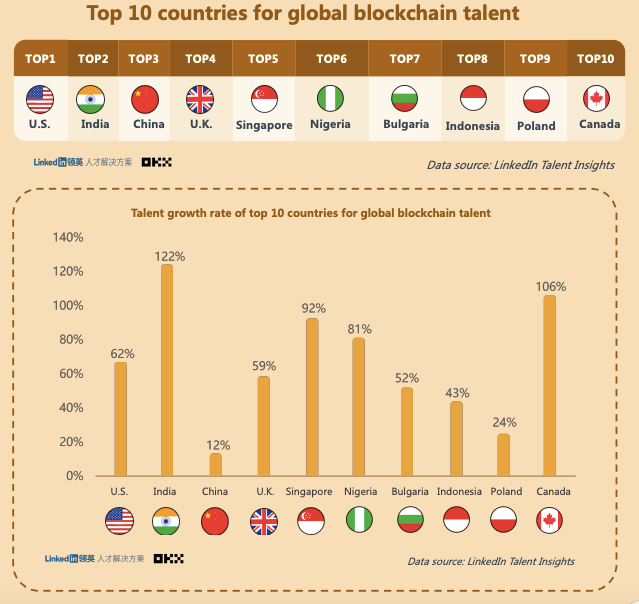
Web3 job postings are booming with Spain having the highest job posting year-on-year growth rate at 609%.
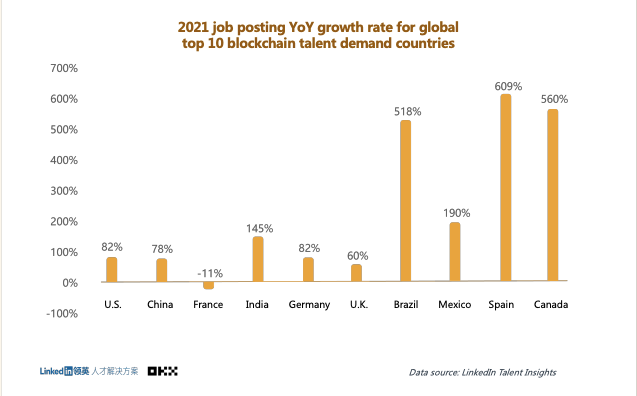
Per web3.career, average salaries for a multitude of non-technical Web3 job opportunities aren’t too shabby.
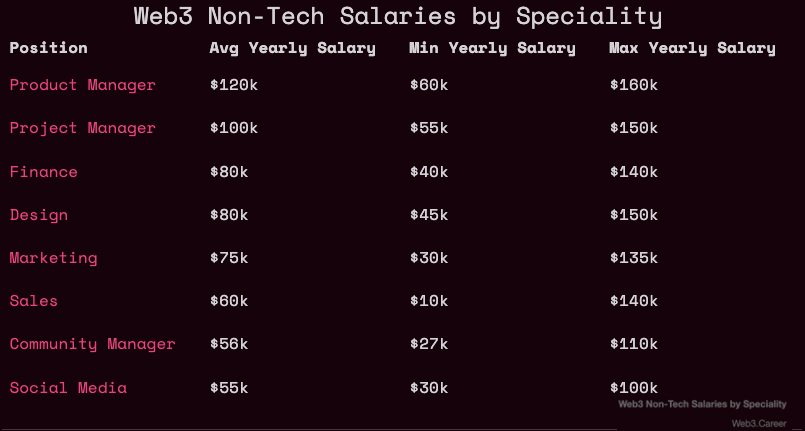
Specialized Web3 talent roles are growing at breakneck speed, with quality assurance analyst showing the highest growth rate from June 2021 to June 2022 at 713%.
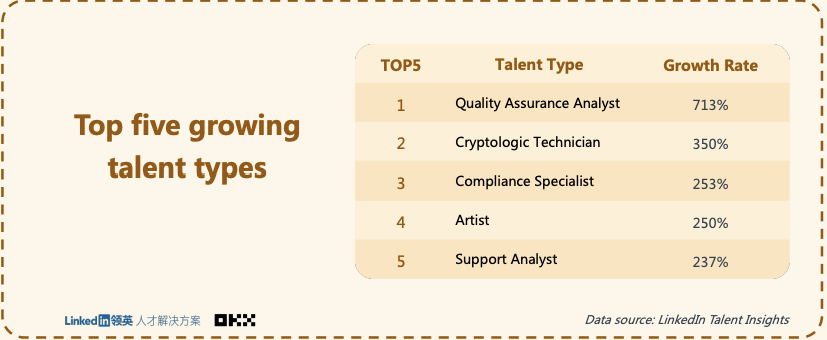
Among these specialized Web3 talent types are numerous technical roles, of which there is a large gap in demand for in the blockchain talent pool.
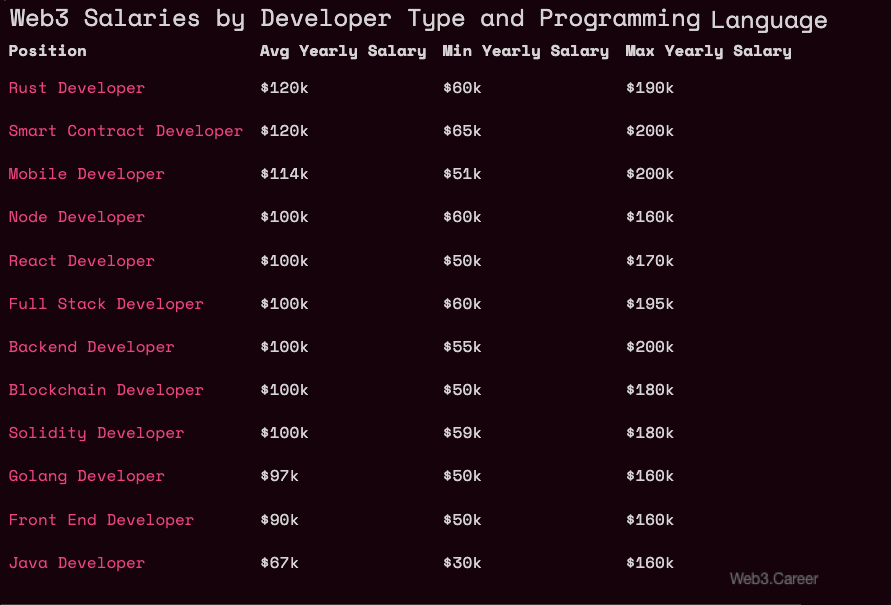
“…the growing shortage of blockchain specialists is a well-documented concern around the world. The demand for blockchain developers is currently at an all-time high,” states LinkedIn’s and OKX’s Web3.0 report.
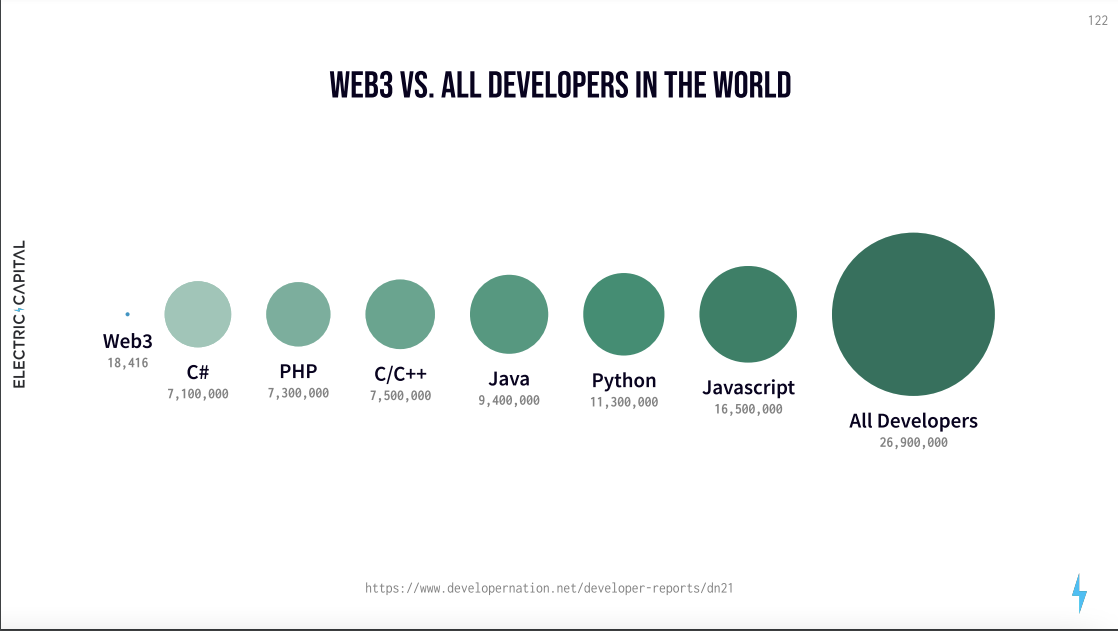
This is despite Web3 developing activity being at an all time high, per Electric Capital’s 2021 Web3 Developer Report.
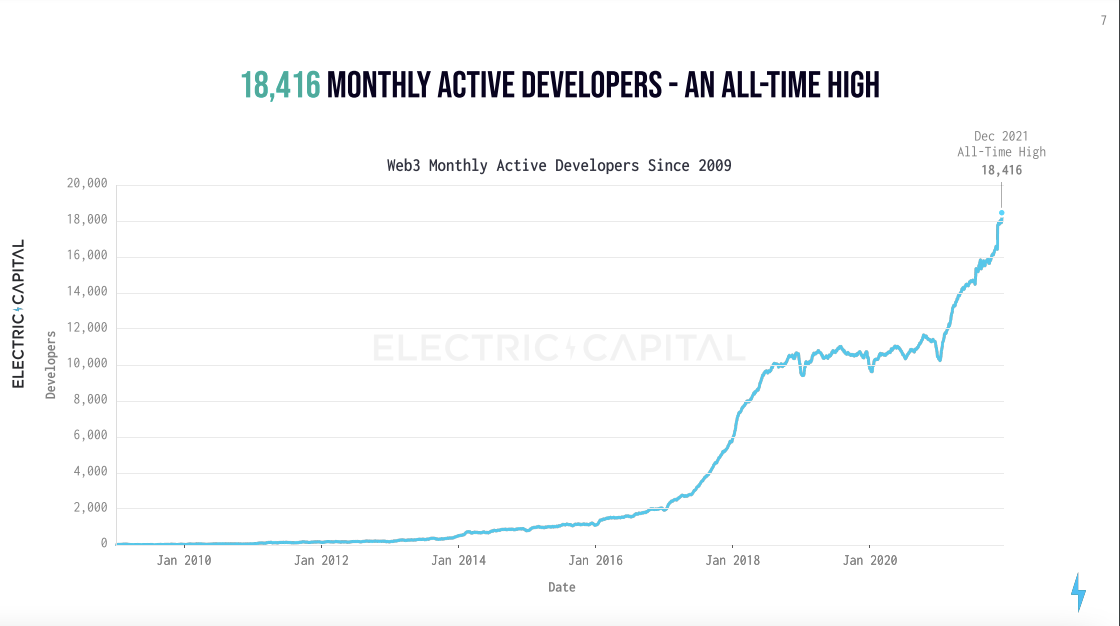
Globally, future Web3 industry job growth is expected to accelerate 300–500% annually!
In short, we’re early, Web3 job growth is currently exploding and will only continue to explode at supersonic rates, and, to top it off*,* you can make a good buck while working in the lucrative Web3 industry.
Make Your Web3 Credentials Work for You
So, how can you make your Web3 creds work for you? Currently, there are two ways:
-
By utilizing them to gain positive reputation on reputation protocols & systems
-
By showcasing them on “Web3 LinkedIn” platforms
Here’s where you can use your Web3 credentials:
⚖️ Reputation Protocols & Systems
Presently, reputation protocols & systems are most helpful to DAOs.
To function effectively in an organization, DAO members must be able to signal a rich sense of their contributions in- and outside of the community. They need to share reputation that mirrors real-world interactions and contextual information about themselves and their peers…Contributors can seamlessly share their contribution history (skills, completed bounties, membership levels, org roles, participation, etc.) and be assigned meaningful tasks on Day 1, avoiding the need to prove themselves. — Rohan Dasika, How Web3 Apps Are Building Composable Trust
-
Holonym 🔐 — @0xHolonym
-
Light — @LightDotSo
-
Popula 👻 — @beepopula
-
Quest 👻 — @quest_protocol
-
Relation 🌟👻 — @relationlabs
👔 Web3 LinkedIn-esque Platforms
The advent of Web3 credentials has naturally led to the rise of many iterations of Web3’s version of LinkedIn. Own your professional Web3 identity, an amalgamation of your achievements, experiences, and relationships, with these “Web3 LinkedIn” platforms. These platforms try to optimize interoperability and aggregate your reputation when building on one standard. My personal favorites in this category are Mazury and Social3 because both are doing an outstanding job of developing their platforms quickly and providing interoperability to their end-users.
-
Gateway ✅ — @Gateway_xyz
-
Mazury 🌟 — @mazuryxyz
-
Social3 🌟 — @Social3Club
6. Issues With the Current Web3 Credential Landscape
Adoption
-
Web2 Adoption: In our digital lives, there are few popular places where we can show off our Web3 credentials, and flexing is one of the core social purposes of credentials! Meta and Twitter have both added support for NFTs as profile pictures, but we’re far from Web3 creds receiving the proper visibility they deserve.
-
Adoption by Web3 Natives: Many Web3 natives are unaware of the various Web3 platforms that can showcase their creds, and bringing more visibility to those platforms was one of the goals when writing this article.
Blockchain Ties
NFTs and SBTs, Web3 creds that are tied to blockchains, could encourage fragmentation of Web3 credentials since all blockchains would be looking to issue credentials natively on their respective chains. This would limit potential cross-pollination of Web3 creds and limit their innovations. A potential solution would be using a bridge of some sort.
Fees are also incurred when transacting on specific blockchains, and an issuer would also be tied to the speed of the blockchain they decide to complete transfer of credentials on.
Lack of Interoperability and Technological Restraints
There is a distinct lack of interoperability amongst Web3 credentialing projects since many are on different blockchains or perhaps unaware of one another. The lack of interoperability holds true for projects on the same blockchain, too, because certain projects simply lack the infrastructure to support others on their platform. This hurts the end user, however, because there is no one clear place where all a user’s Web3 creds can be both integrated and displayed, leading to a fractured Web3 credential space.
Marketing Woes
In many cases, a person is limited to claiming credentials for whatever projects a Web3 platform decides to partner with or allow on their platform since a platform might not be aware of all Web3 credentialing projects. Requests can take a long time to process in the case of noox.world and POAP. Web3 project marketing is limited to centralized social media platforms like Twitter.
Repeating Web2’s Mistakes
Centralization is what we’re trying to escape with Web3, but we sometimes seem to be falling back into the same bad habits in our quest for decentralization.
For instance, if a platform that issued the Web3 credential disappears, the platform-specific identity data about the issuer is lost. This defeats most of the value of creating the Web3 credential in the first place.
Within Web3, some organizations are attempting to build reputation by keeping data associated with a user on their centralized database, which is the same problem that Web2 has.
Positives
Concurrently, there are many positive contributions notwithstanding these difficulties, however.
Two universities in South Korea, Hoseo University and Sungkyunkwan University, and Indian institutions IITK and Maharashtra State Board of Skill Development have kickstarted Web3 adoption by issuing verifiable digital degrees to their students.
Also, efforts are being made to combine the best of both worlds with the ISO 18013–5 Mobile Driving License (mDL) and verifiable credentials, so the possibility of our Web3 wallets interacting with our driver’s licenses is in the near future.
Summary
Phew, we’ve covered a lot!
In brief, the majority of Web3 credential projects are still in nascent stages of development, while more mature protocols, like POAP, continue to thrive and assert themselves as mainstays of the decentralized identity and credential stack.
Because credentials are part of society’s social fabric, their importance will only rise as Web3 matures.
I encourage you to explore the projects above, as many provide a wealth of information to vault you to new highs of your Web3 journey.
Thank you for reading!
If any informational errors are found, if you would like your project added to one of the curated lists above, or if you work on one of the above listed (or not listed) projects, I’d love to chat! Please feel free to message @coolnothankyou on Twitter.
Special thanks to Deb Pratiher, Tania, Ujjwal Nadhani, Wessel Pannebakker, and Yash Bora for their feedback and insights.
Further Reading
Works Cited
“PM launches tech for digital citations at IIT-K.” Indian Institute of Technology Kanpur, https://www.iitk.ac.in/new/media-release-blockchain-based-degree. Accessed 20 Oct. 2022.
Bankless Shows. “Soulbound: On or off Chain? | Vitalik Buterin and Evin McMullen.” YouTube, 8 June 2022, https://www.youtube.com/watch?app=desktop&v=TbyVyVNsyys.
Boyd, Michael. “What’s the Difference Between an NFT and a Verifiable Credential?” Trinsic, https://trinsic.id/whats-the-difference-between-an-nft-and-a-verifiable-credential/. Accessed 7 Oct. 2022.
Buterin, Vitalik. “Soulbound.” Vitalik Buterin’s website, 26 Jan. 2022, https://vitalik.eth.limo/general/2022/01/26/soulbound.html.
Dasika, Rohan. “How Web3 apps are building composable trust.” The Ceramic Blog, Ceramic Network, 19 May 2022, https://blog.ceramic.network/how-web3-apps-are-building-composable-trust/.
Emerald City DAO. FLOAT, 2022, https://floats.city/. Screenshot.
Identity Woman in Business. “Where the W3C Verifiable Credentials meets the ISO 18013–5 Mobile Driving License.” Identity Woman in Business, Medium, 12 Sep. 2022, https://medium.com/@identitywoman-in-business/where-the-w3c-verifiable-credentials-meets-the-iso-18013-5-mobile-driving-license-2b0a6c992920.
Ivy, Thom. “Verifiable Credentials Vs. NFTs: A Primer.” Metagame, Mirror, 17 Aug. 2022, https://metagame.mirror.xyz/y7Wk2agDiyQ4nckygusBqpfgUhrFvfE76NizXhceZ4Y.
Jacoby, Leo. “ERC-721 or 1155 for Web3 Achievements?” Metagame, Mirror, 7 Sep. 2022, https://metagame.mirror.xyz/x82UIEOOfL-qSROZVaBlSBG3fMVIKZAwBbqUMorzO58.
Jain, Sanket. “Forging the Gateway.” Gateway’s Newsletter, Substack, 7 Sep. 2022, https://mygateway.substack.com/p/forging-the-gateway?sd=pf.
LinkedIn and OKX. 2022 Global Blockchain Industry Talent Insights: Focus on Web 3.0. OKX, 8 Aug. 2022, https://www.okx.com/academy/en/global-blockchain-industry-talent-insights-okx-linkedin-report.
MantisClone. “Awesome Reputation Systems.” Github, 7 Oct. 2022, https://github.com/MantisClone/awesome-reputation-systems#achievements-and-learning-platforms.
Marcus, John. “Growing ‘maze’ of education credentials is confusing consumers, employers.” Education, The Washington Post, 26 Dec. 2021, https://www.washingtonpost.com/education/2021/12/26/education-credential-certificate-scams/.
Motiwala, Muhammad Bilal. “Pyme.” Grants, Gitcoin, Sep. 2022, https://gitcoin.co/grants/7243/pyme.
Park, Danny. “Samsung-backed university to issue NFTs to select graduates.” fast Forkast, Forkast, 14 Feb. 2022, https://forkast.news/headlines/samsung-backed-university-nfts-graduates/.
Park, Danny. “South Korean university to issue NFTs to all 2,830 graduates.” fast Forkast, Forkast, 18 Feb. 2022, https://forkast.news/headlines/south-korea-nfts-graduates-hoseo/.
Polygon Team. “When Web3 and Education Collide.” The Polygon Blog, Polygon, 17 Aug. 2022, https://blog.polygon.technology/when-web3-and-education-collide/.
Qureshi, Mehab. “Maharashtra issues 100,000 plus verifiable diplomas on Polygon blockchain.” The Indian Express, 4 Aug. 2022, https://indianexpress.com/article/technology/crypto/msbsd-issues-100000-plus-verifiable-digital-diplomas-on-polygon-blockchain-8068644/.
Serto. “Revolutionizing Verifiable NFT Authorship to Benefit Artists.” Serto, https://www.serto.id/use-cases/verifiable-nft-authorship. Accessed 15 Oct. 2022.
Shen, Maria, et al. Developer Report January — December 2021. Electric Capital, 5 Jan. 2022, https://github.com/electric-capital/developer-reports/blob/master/dev_report_2021_updated_012622.pdf.
Sporny, Manu, et al. Verifiable Credentials Data Model v1.1. Edited by Manu Sporny, et al. World Wide Web Consortium (W3C), 3 Mar. 2022, https://www.w3.org/TR/2022/REC-vc-data-model-20220303/.
Weavechain. “The Future of Verifiable Credentials.” Weavechain, Medium, 1 Aug. 2022, https://medium.com/weavechain/the-future-of-verifiable-credentials-d6cc47694398.
Web3 Jobs. “Web3 Developer Salary — Oct 2022.” Web3 Jobs, Oct. 2022, https://web3.career/web3-salaries. Screenshot.
Web3 Jobs. “Web3 Non-Tech Salary — Oct 2022.” Web3 Jobs, Oct. 2022, https://web3.career/web3-non-tech-salaries. Screenshot.
Weyl, E. Glen, et al. Decentralized Society: Finding Web3’s Soul. SSRN, 10 May 2022, https://papers.ssrn.com/sol3/papers.cfm?abstract_id=4105763.
Disclaimer: The author owns Web3 credentials from and has opened accounts with a variety of the platforms, products, and protocols in this article. None of what is expressed in this article is financial advice. Please DYOR (Do Your Own Research) before interacting with any of the platforms, products, or protocols listed.
Find nancy in the Metaverse
Follow me on social media to get notified of future articles, deep-dives, and posts.
nancy’s website:
Follow nancy on Twitter:
Follow nancy on Farcaster: @thejuice